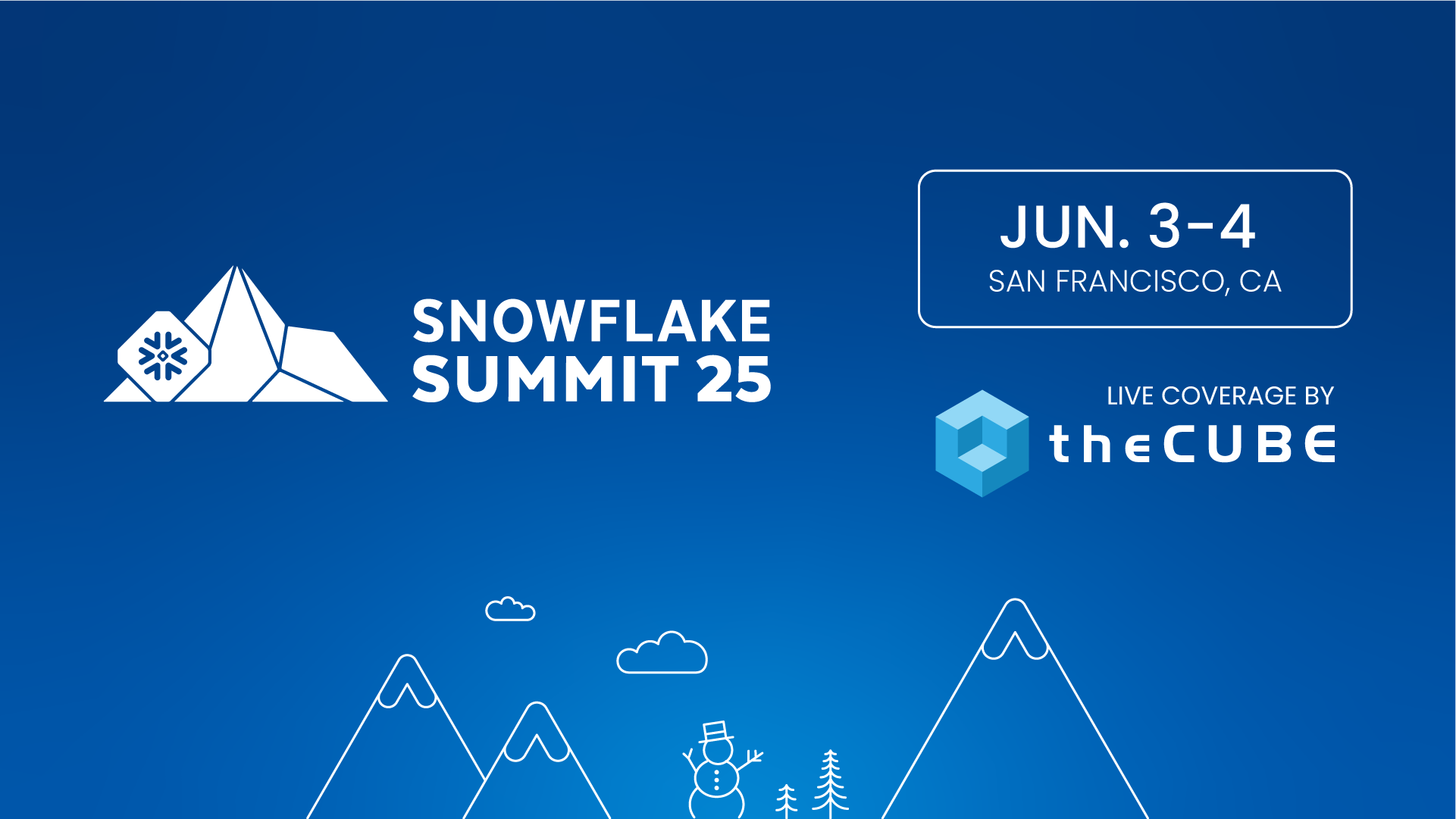 AI
AI
 AI
AI
 AI
AI
In today’s enterprise technology market, platforms are no longer just passive repositories; they are active engines for building intelligent systems. Data, artificial intelligence and app development are coming together in new ways, as solutions such as the Snowflake enterprise AI strategy emerge.
In this new era, Snowflake Inc. has positioned itself as the link that brings together data, intelligence and infrastructure to power the next generation of enterprise applications. The company’s expanding role in enterprise AI and application development, and its AI Data Cloud, will be a key focus during Snowflake Summit 2025.
Snowflake is entering a next wave of opportunity. That new era could be referred to as the “Data Cloud 3.0” era, according to Dave Vellante, chief analyst at theCUBE Research.
“The fundamentals are that the company has gone from a pristine, simplified cloud data warehouse and aspires to be the most powerful control plane for AI-native applications,” Vellante said. “Our research indicates that the vendors who collapse the distance between data and intelligence will capture the next wave of enterprise spend, and Snowflake is moving aggressively to be one of them.”
Snowflake Summit will explore AI-driven innovation, operational efficiency and other key topics. It will also explore how developers are using Snowflake Cortex to build next-generation AI applications.
TheCUBE analysts will discuss the latest use cases and product announcements tied to the Snowflake enterprise AI strategy during the event. Join us from June 3 to 4 for our coverage of Snowflake Summit, live on theCUBE, SiliconANGLE Media’s livestreaming studio. (* Disclosure below.)
Check out what’s in store for theCUBE’s coverage of Snowflake Summit:
Earlier this year, Snowflake reported solid earnings and revenue beats, and saw its quarterly revenue top $1 billion for the first time. The company remains focused on making its platform easy to use and enabling fluid access wherever it sits, according to Snowflake Chief Executive Officer Sridhar Ramaswamy.
“We see an enormous opportunity ahead as we extend this value throughout the full data lifecycle,” Ramaswamy said in May.
Snowflake had a great quarter, according to Holger Mueller, vice president and principal analyst at Constellation Research Inc. In the future, the company will need to keep an eye on how its customers adopt AI and where they will keep the data they need.
“The balance is slowly shifting from analytics vendors to AI automation vendors, and there the transactional data firms have a long up on paper and are gaining momentum in product,” Mueller said in May. “The second half of 2025 is shaping up to be different, not only for Snowflake but for all analytics-focused companies.”
In this new environment, Snowflake has turned openness from a weakness to a strength. By leaning into Iceberg, leveraging tools such as Snowpark and cross-cloud Snowgrid, while open sourcing a strong governance framework with Polaris, the company is using “open” as a means of satisfying customer concerns and responding to market shifts, according to Vellante.
“Moves like this take the industry beyond old lake-versus-warehouse debates,” he said. “In our view, the platform that can serve both data and model gravity, with open entries and exits to its system, presents a winning combination for customers.”
In early April, Snowflake announced full support for Apache Iceberg, an integration the company said would allow organizations to use Iceberg tables without data migration. That capability would enable the direct development of analytics and artificial intelligence within open-format environments.
In May, DataOps.live Inc. introduced a software toolkit that promised to help Snowflake Inc. customers manage their data more efficiently. The offering, known as Dynamic Suite, included two components on launch: Dynamic Delivery and Dynamic Transformation.
The next steps for Snowflake’s expanding role in enterprise AI and application development will be discussed during Snowflake Summit event. TheCUBE will deliver comprehensive coverage, spotlighting analyst insights into what’s ahead for Snowflake’s enterprise AI strategy. You can follow theCUBE’s wall-to-wall coverage for firsthand insights.
Don’t miss theCUBE’s coverage of Snowflake Summit from June 3 to 4. Plus, you can watch theCUBE’s event coverage on-demand after the live event.
We offer you various ways to watch theCUBE’s coverage of Snowflake Summit, including theCUBE’s dedicated website and YouTube channel. You can also get all the coverage from this year’s events on SiliconANGLE.
SiliconANGLE also has podcasts available of archived interview sessions, available on iTunes, Stitcher and Spotify, which you can enjoy while on the go.
SiliconANGLE also has analyst deep dives in our Breaking Analysis podcast, available on iTunes, Stitcher and Spotify.
During Snowflake Summit, theCUBE analysts will facilitate exclusive interviews and expert insights on the innovations shaping today’s data landscape — from AI-powered applications to seamless platform interoperability across the Snowflake AI Data Cloud. Guests will include:
(* Disclosure: TheCUBE is a paid media partner for Snowflake Summit. Neither Snowflake Inc., the primary sponsor of theCUBE’s event coverage, nor other sponsors have editorial control over content on theCUBE or SiliconANGLE.)
Support our mission to keep content open and free by engaging with theCUBE community. Join theCUBE’s Alumni Trust Network, where technology leaders connect, share intelligence and create opportunities.
Founded by tech visionaries John Furrier and Dave Vellante, SiliconANGLE Media has built a dynamic ecosystem of industry-leading digital media brands that reach 15+ million elite tech professionals. Our new proprietary theCUBE AI Video Cloud is breaking ground in audience interaction, leveraging theCUBEai.com neural network to help technology companies make data-driven decisions and stay at the forefront of industry conversations.